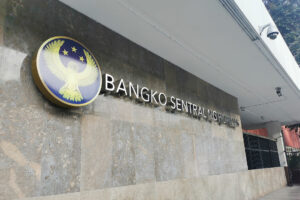




Philippines Trade Update: Trade trajectories trend along
 DOWNLOAD
DOWNLOAD

Policy Rate Updates: Double cut finale
 DOWNLOAD
DOWNLOAD

Monthly Economic Update: One for the road
 DOWNLOAD
DOWNLOAD


2023 Philippine financial system resources expand

The total resources of the Philippine financial system went up in 2023, mainly driven by higher banking resources, preliminary data from the Bangko Sentral ng Pilipinas (BSP) showed.
Based on central bank data, the resources of banks and nonbank financial institutions grew by 7.6% to PHP 31.056 trillion in 2023 from PHP 28.864 trillion in 2022.
Banking resources rose by 8.6% to PHP 25.859 trillion in 2023 from PHP 23.807 trillion a year prior. Banks include universal and commercial, thrift, digital, and rural and cooperative lenders.
Universal and commercial banks held PHP 24.263 trillion of total banking resources, 8.4% higher than PHP 22.376 trillion in 2022.
Resources of thrift banks likewise went up by 7% to PHP 1.1 trillion from PHP 1.028 trillion a year ago.
Total resources of digital banks stood at PHP 91 billion in 2023. The BSP’s consolidated data for digital banks were first released in March 2023. The six online banks that secured licenses to operate in the country were Tonik Digital Bank, Inc.; GoTyme Bank Corp.; Maya Bank, Inc.; Overseas Filipino Bank; UNObank; and UnionDigital Bank.
Meanwhile, rural and cooperative banks’ resources stood at PHP 404 billion as of end-March 2023, increasing by 12.5% year on year.
Nonbanks’ resources also grew by 5.9% year on year to PHP 5.197 trillion as of end-June 2023.
The central bank has not released updated data for rural lenders and nonbanks.
Nonbank financial institutions include investment houses, finance companies, security dealers, pawnshops, and lending companies.
Institutions such as nonstock savings and loan associations, credit card companies, private insurance firms, the Social Security System, and the Government Service Insurance System are also considered nonbanks.
The expansion in the financial system’s total resources in 2023 is faster than the gross domestic product growth of 5.6% seen last year, Rizal Commercial Banking Corp. Chief Economist Michael L. Ricafort noted in a Viber message.
The increase in banking resources can be attributed to the continued recovery of industries following the coronavirus pandemic, especially amid the pickup in foreign and local tourism, Mr. Ricafort said.
“Relatively higher US and local interest rates also increased interest income and spreads or margins, leading to faster growth in (bank) earnings,” he added.
The BSP raised its policy rate by 450 basis points (bps) from May 2022 to October 2023 to 6.5%, the highest level in 16 years. It is widely expected to keep borrowing costs steady in the first semester amid lingering inflation risks.
Better asset quality, profitability, and capitalization of banks also contributed to the faster growth in their total resources, Mr. Ricafort added.
The net income of the banking industry rose by 14.4% to PHP 354.93 billion in 2023 from PHP 310.12 billion in 2022.
Outstanding loans disbursed by big banks climbed by 7% to PHP 11.701 trillion at end-December.
Meanwhile, the banking industry’s bad loan ratio fell by 3.23% in December from 3.41% a month earlier, the lowest in a year, central bank data showed.
Lenders’ gross bad loans stood at PHP 446.99 billion, 12% higher than a year earlier and 1.6% lower than the end-November level. A loan is considered nonperforming when payments have not been made for 90 days.
“Investment and financial market gains, especially higher trading gains amid easing headline inflation towards central banks targets in the US and locally would support possible cut in Fed rates later this year and could be matched locally,” Mr. Ricafort said.
“(Rate cuts) could help reduce borrowing or financing costs and would support greater demand for loans. It would also support more trading gains for the coming months,” he added. — Keisha B. Ta-asan
This article originally appeared on bworldonline.com





 By BusinessWorld
By BusinessWorld